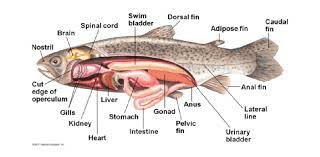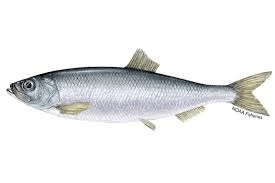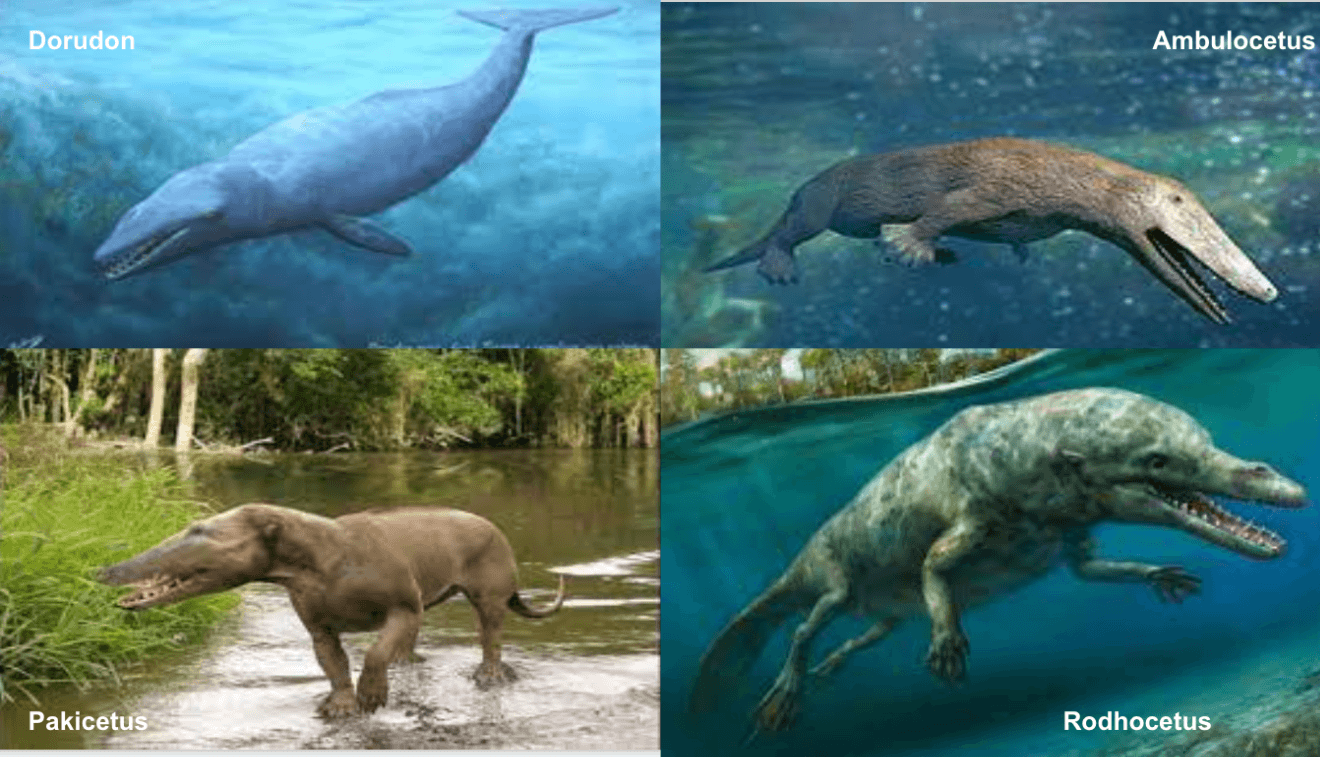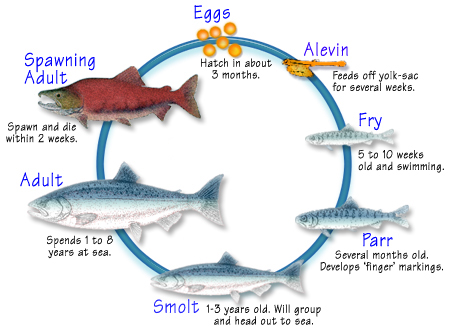Name two species of marine birds we saw on session 2
What is cormorants, gulls, common murre, bald eagle...
The four species of pinnepeds in the Salish Sea.
(We saw 3 species during our boat trip)
What are Pacific harbour seals, Steller sea lions, California sea lions and Northern Elephant seals.
What do Humpback Whales have instead of teeth?
Baleen! Humpbacks use baleen as a strainer to force water out of their mouth but keep the food!
The two species of jellyfish we saw on session 2
What is moon/ cross jelly and egg yolk jelly?
How does seaweed produce food?
Photosynthesis!
What is a swim bladder and what does it do?
The swim bladder is a gas-filled organ in fish. Its primary function is maintaining buoyancy, but it is also involved in respiration, sound production, and possibly perception of pressure fluctuations (including sound).

One adaptation that diving birds have:
What is webbed feet (to help them propel underwater), a fat layer (to help them stay warm underwater and decrease their buoyancy), presence of a beak pouch (pelicans) to help them hold more fish...
What does the Pacific harbour seal use to detect the movement of prey underwater?
Their whiskers!!!
Their whiskers can detect water movements, such as the wake of a passing fish. Each whisker is a modified hair packed with nerves that are super-sensitive to movement such as the vibrations of a passing fish. By sweeping their whiskers on an object, they "feel" its size, shape and texture.
Where do Humpbacks go to feed? Where to they go to mate?
Humpbacks use California, BC and Alaska as their feeding grounds!
58% of BC Humpbacks go to Mexico to mate while the rest go to Hawaii!
On session 2, we saw a bunch of jellyfish in Whirl Bay. Jellyfish are drifters (they can't swim against the current). How have they adapted to catch their prey?
Jellyfish have nematocysts which are stinging cells in their tentacles. When a krill or a small fish comes close to them the nematocysts are released and the prey is stung
How do seaweeds hold onto the ocean floor to survive strong currents and wave action?
Strong Holdfasts! Seaweeds do not have roots. They have holdfasts, stipes, and blades!
What are the benefits of small fish gathering together and moving in a school?
Protection from predators, finding food more efficiently (more eyes on the lookout), easier to find a mate.
Gulls are not diving birds...how have they adapted to catch the fish?
Is it a physical or a behavioral adaptation?
Gulls wait at the surface for the fish to be pushed up by the diving birds so they are able to catch them or they will just steal the fish from the other birds!
It is a behavioral adaptation!
The weight of a Steller sea lion:
A. 800lb
B. 1500lb
C. 2400lb
BONUS - what do they eat ?
C. 2400lb Largest eared seal in the world!
BONUS - they eat more than 50 species of fish and invertebrates.
They are generalists and opportunistic feeders. Having such a large variety of prey ensures a consistent food source. They eat on average about 6% of their body weight daily.
How big is a Humpback Whales throat?
A) As wide as a basketball
B) As wide as a human fist
C) As wide as a Hoola Hoop
B! A humpback whales throat is only as wide as a humans fist.
Jellyfish don't have a brain, eyes, a sense of smell, or ears...how are they able to sense and respond to their environment?
Jellyfish have a network of nerves running through the entirety of their body. This way they are able to sense stimuli in all directions!
What is the maximum size for 1 piece of Bull Kelp?
A) 50ft
B) 20 Ft
C) 75 Feet
D) 100 Feet
E) 135 Feet
135 Feet!
A piece of kelp can grow 135 Feet in its 1 year life cycle!
Define countershading
The upper surfaces of the body are more darkly pigmented than the lower surfaces of the body. This helps certain fish species, like the herring, to camouflage from predators.
Birds looking from above will have trouble finding the herring among the dark depths of the ocean. Other fish species may also have trouble finding the herring as they look up towards the bright surface.

While passing through race rocks, you may have noticed some cormorants with their wings spread drying off. Cormorants, compared to other diving birds, have adapted to get their feathers wet...why?
Is it a physical or a behavioral adaptation?
By getting their feathers wet, cormorants will be heavier which means they can be faster underwater as the additional weight will help keep them underwater.
It is a physical adaptation!
How does the harbour seal protect itself from predators?
Camouflage (colour of fur)
Stealthy movements
Holding it's breath and hiding in the depths
Listening (they learn to distinguish the calls of mammal eating killer whales vs salmon eating killer whales)
How do whales sleep?
Whales are known as ‘conscious breathers’, this means they have the ability to remain alert and ensure their blowhole is at the surface of the water in order to take a breath.
This voluntary system means they must keep at least part of their brain awake to trigger each breath. This is very different to humans, who have involuntary respiratory systems. Our involuntary respiratory system allows us to breathe even while our conscious mind is asleep. If an Orca were to fall asleep in the same way we do, they would be at risk of drowning.
Name one stimulus that jellyfish respond to
Is it: changes in temperature, salinity, detect currents, touch...
What causes bull kelp to float to the surface?
Carbon Monoxide!
How have fish adapted to their mostly dark environment?
Big eyes and extra layers of rod cells = greater sensitivity to dim and bright light.
Some have better night vision than others (especially deep-sea species).
While on session 2 we saw the common murre, the second deepest diving bird in the world (it can dive to 160 m/ 500 ft), how can it deal with the pressure at those depths?
Deep diving birds like the common murre have the ability to store more oxygen in their tissues, especially in their muscles, they can slow their heart rate down (bradycardia)
The longest recorded dive time of a Northern elephant seal:
A. 32 minutes
B. 63 minutes
C. 109 minutes
C. 109 minutes!!!!
Average dive time is 23 minutes. They spend more than 80% of their lives at sea, and up to 90% of that time on deep dives.
Deepest recorded dive by a female elephant seal was at 1,735 m (6,000ft). That's more than a mile, almost 2km.
Elephant seal's eyes can adjust from daylight to low light conditions in siz minutes. Our eyes take 22 minutes.
What is the correct timeline for the evolution of these animals? Why did you choose the order that you did?
1) Pakicetus
2)Ambolocetus
3)Rodhocetus
4) Dorudon
We talked a lot about climate change. Jellyfish have adapted to climate change:
1. FALSE: Jellyfish like many other species are suffering due to climate change
2. TRUE: Jellyfish are thriving with the changing climate
Is it 2. TRUE?
Why is seaweed important for Vancouver Island? (Multiple answers)
The five species of pacific salmon and the salmon life cycle.
What are:
- Chinook salmon.
- Chum salmon.
- Coho salmon.
- Pink salmon.
- Sockeye salmon
